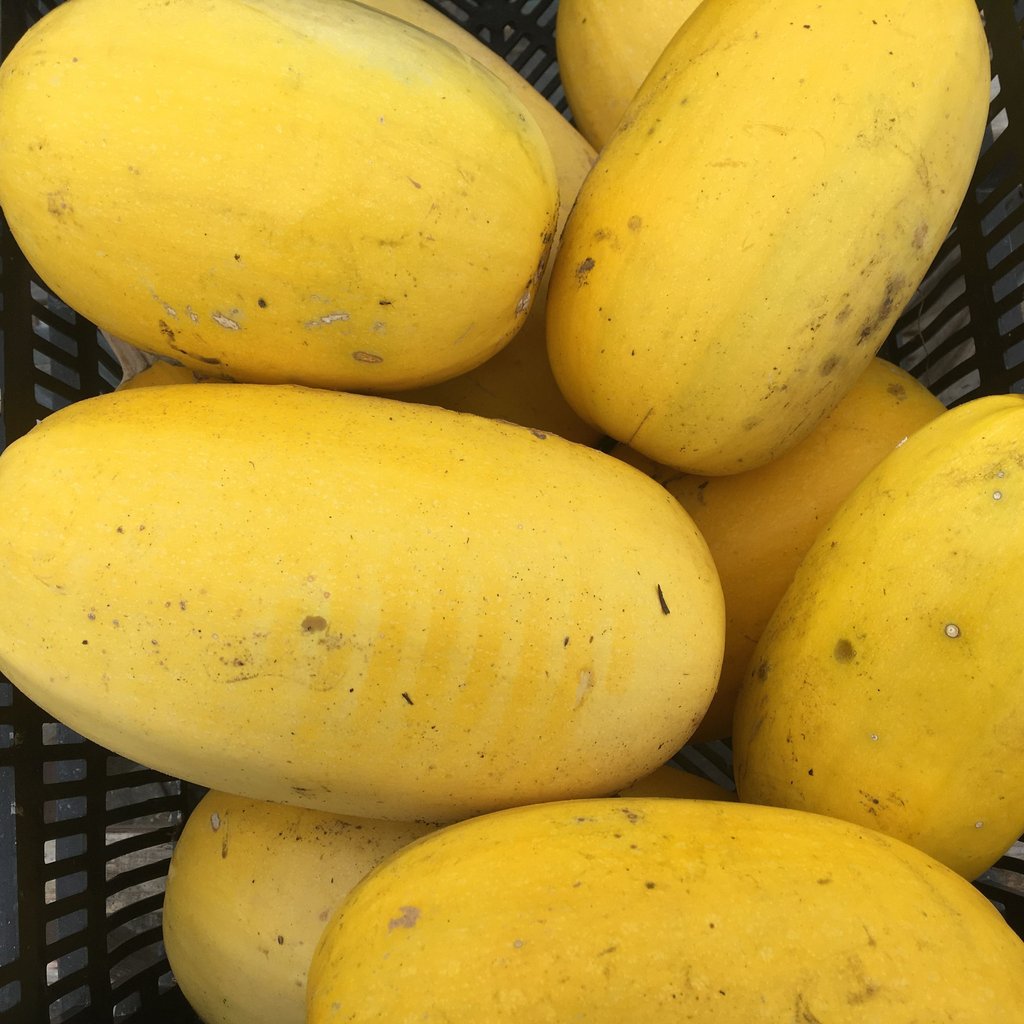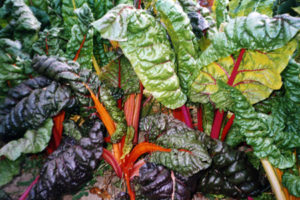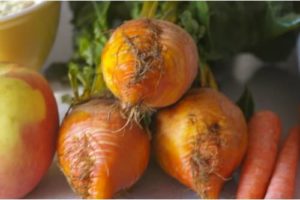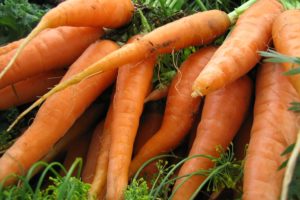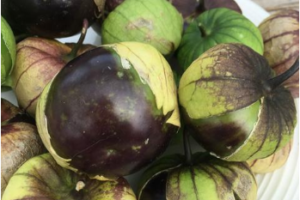Description
Botanical name
Cucurbita pepo
Family
Cucurbitaceae
Spacing
Dig a hole 30 cm (12″) deep and 45 cm (18″) across and fill it with well rotted compost or manure. Cover with a 15-20 cm (6-8″) layer of soil to make a raised mound. Leave 2 m (6′) between mounds, plant 4-6 seeds per mound. After germination, thin to 3 per mound.
Depth
Plant seeds 2½ cm (1″) deep.
Requirements
Full sun, hot hot weather and warm, deep, rich, well-drained, organic soil with a pH of 6-6.5.
Germination
Seeds will sprout in 7-10 days.
Pests
Squash is susceptible to many pests and diseases, but problems with this plant are mostly caused by cultural practices that stress the plants. Make sure you keep the garden clean and tidy, water consistently and avoid directly spraying water on to the leaves. When plants get off to a good start, few pests will bother them. Protect young plants with floating row covers that are removed when flowering starts. Cucumber beetles are our biggest problem, along with powdery mildew. Several home-sprays are effective against powdery mildew. Spray either of the following at 7-10 day intervals: 1 tsp baking soda and 1 quart of water with a squirt of dish soap; or 1 part milk to 9 parts of water.
Timing
Directly plant seed outdoors from late May to mid June. Seed can be started indoors 3 weeks before the plant-out date, once danger of frost has passed.
Growing
Squash are heavy feeders and benefit from extra nutrition from periodic compost / fertilizer applications. Use plastic mulch to keep up soil moisture and temperature, and insect netting to keep cucumber beetles away until plants start flowering. Then take the netting off to allow bees to pollinate your fruit. Fruit that is not fully pollinated will be small and shrivelled and should be removed from the plant. Will keep producing until weather cools down.
Harvest
Late summer, early fall, when its colour has changed to golden yellow.
Season
Warm, annual
